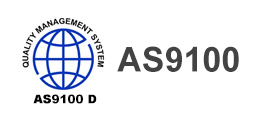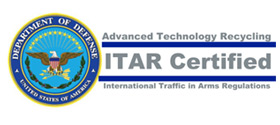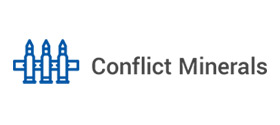Deep Drawn Parts: The Key To Efficient Aerospace Engineering
18th September, 2023Redefining Sky-High Standards: The Role of Deep Drawn Parts in Aerospace Engineering
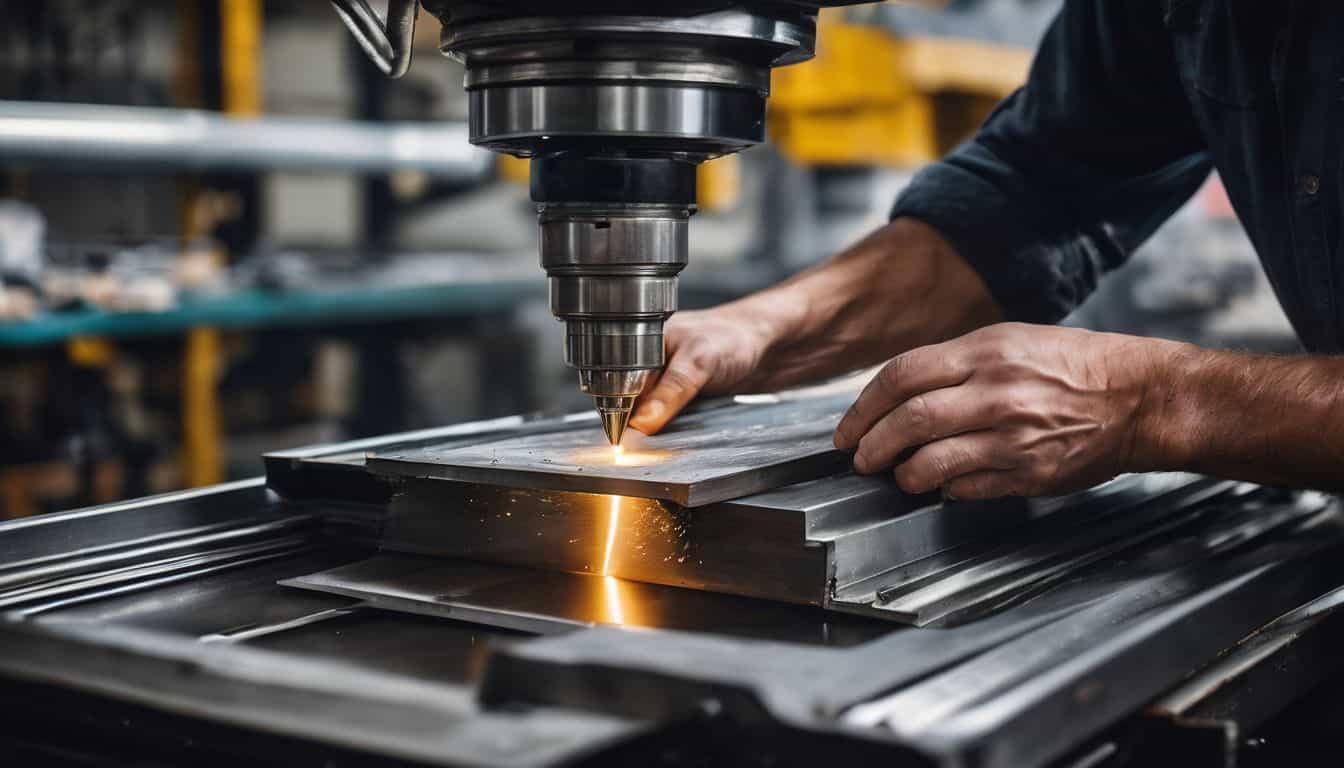
Aerospace engineering requires efficient and reliable manufacturing methods for high-volume production. One such method, deep drawing, is a sheet metal forming process that uses a punch and die to shape the workpiece.
This article dives into how deep drawn parts play an integral role in aerospace engineering, from explaining the advantages of deep drawing to providing design tips specific to aerospace applications.
Get ready to explore why this methodology could be your key ticket in our sky-high industry!
Key Takeaways
- Deep drawing is a useful process in aerospace engineering. It can make strong, thick parts with complicated shapes quickly and cost-effectively.
- The method used for deep drawing gives parts a long lifespan because it makes them resistant to heat, pressure and vibration.
- Environmentally – friendly, deep drawing cuts down waste by making the most out of every piece of metal. It needs less energy than other methods too!
- This bottom-line friendly technique creates high-quality aerospace components that are easy to use consistently across many batches, ramping up productivity levels!
Advantages of Deep Drawing
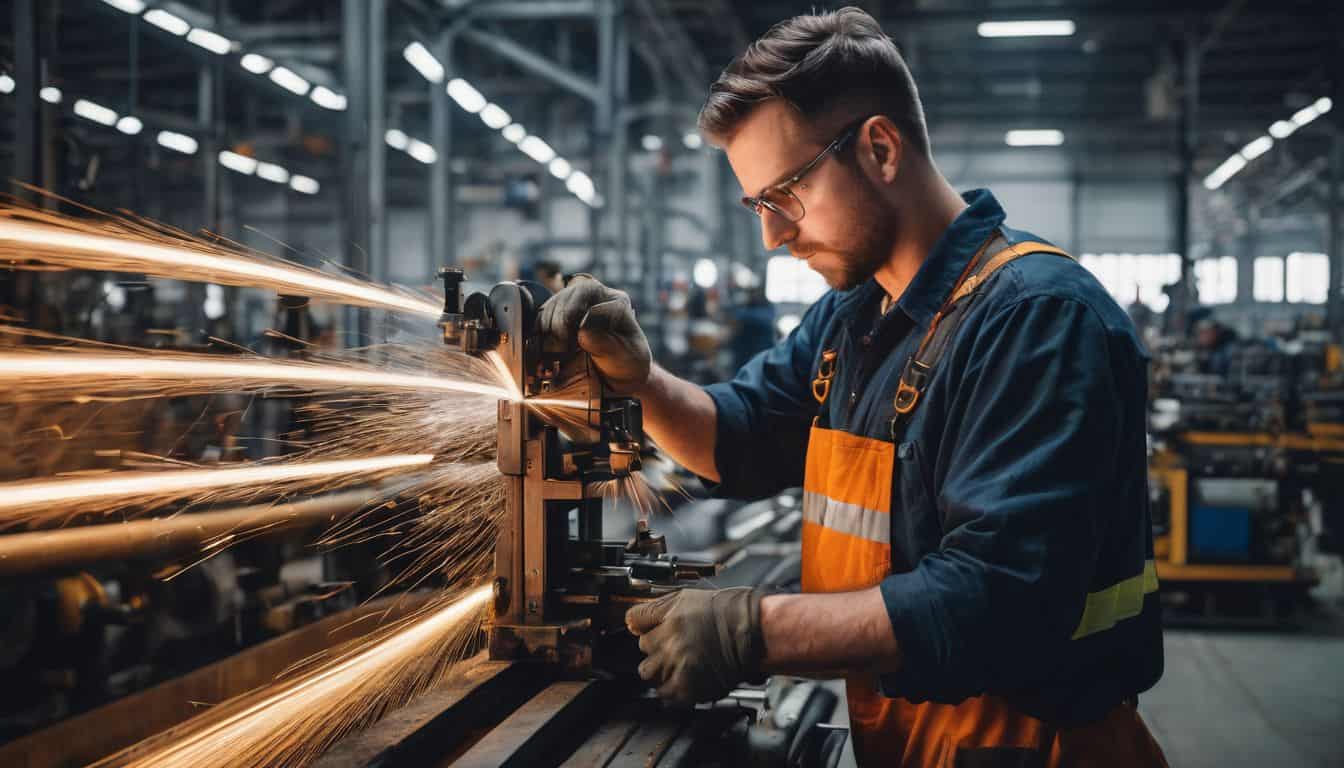
Deep drawing offers numerous advantages, like increased strength and thickness of materials used. It allows for the creation of complex shapes with a high level of design flexibility.
This process caters to a range of applications thanks to its versatility, boosting product quality significantly. Deep drawn parts require minimal maintenance costs which makes them cost-effective in long-term projections.
These components enjoy an extended part life due to their sturdy build and are environment-friendly because they encourage efficient usage of materials. The ease-of-use factor combined with repeatable results heightens productivity standards.
In essence, deep drawing is known for producing extremely fine quality parts that conform to exacting industry standards.
Increased Strength, Thickness, and Efficiency
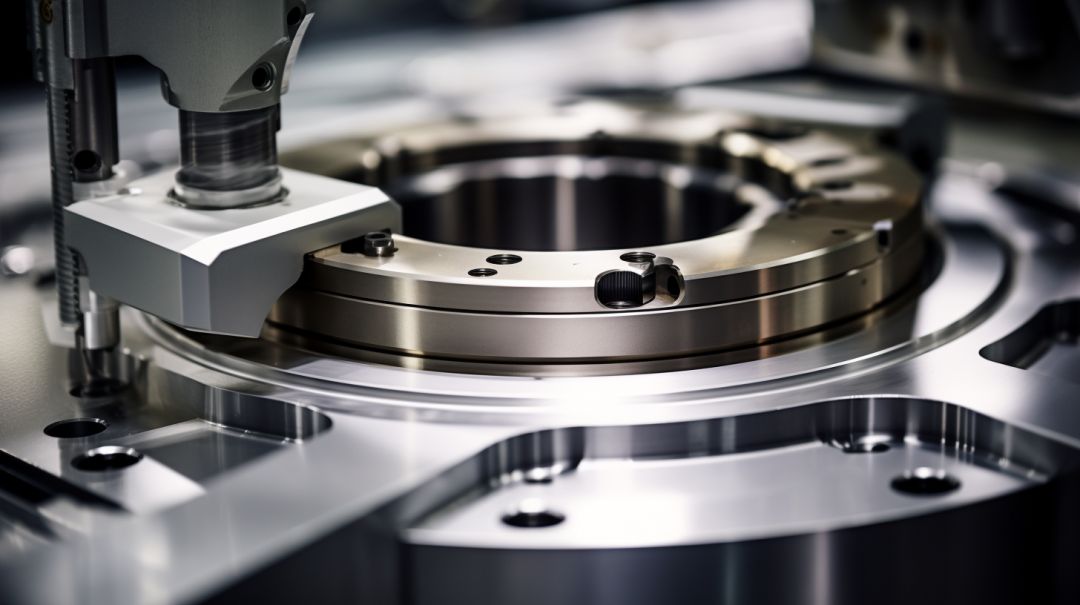
Deep drawn stamping extensively enhances the strength, thickness, and efficiency of aerospace components. Its profound impact streams from its ability to transform a flat piece of metal into an intricate part with enhanced mechanical properties.
The process meticulously stretches the metal, augmenting its strength without compromising on structure or size. More so, it ensures optimal use of materials reducing waste remarkably and providing cost-effective solutions for high-volume production needs in the aerospace industry.
Its significant contribution to increased component life expectancy stands unmatched making deep drawing a preferred choice amongst engineering professionals globally. This efficient operation inherently accommodates complex geometries promising consistently reliable results every single time faster than conventional forming techniques boosting operational productivity manifold.
Complex Shapes
Deep draw stamping sharply excels in manufacturing intricate and complex shapes. Aerospace components often require unique contours and geometries that only this proven method can achieve with precision.
Generating a myriad of designs from bells to cups, the deep drawn parts obtained offer superior detail consistency across high-volume production.
The intrinsic capabilities of drawing deeply into material provide opportunities for creating seamless construction. Shapes that would typically necessitate joining several separate pieces can instead be formed as one integrated component with desirable strength characteristics.
The process allows manufacturers to ensure accurate, precise measurements displaying tight tolerances for even the most labyrinthine design specifications in aerospace applications.
Design Flexibility

Deep drawing embraces design flexibility and opens the door to innovative solutions in aerospace engineering. This process can handle various shapes, sizes, and styles without compromising the quality of deep-drawn parts.
It offers an extraordinary level of adaptability that allows engineers to actualize even complex components with intricate details. The precision metal forming technique is proficient at creating identical pieces in high-volume production while maintaining tight tolerances, which are critical for aerospace applications.
Metal stampings produced by this method ensure a high degree of accuracy, granting engineers the freedom to exploit their creativity and innovate ground-breaking designs.
Application Diversity
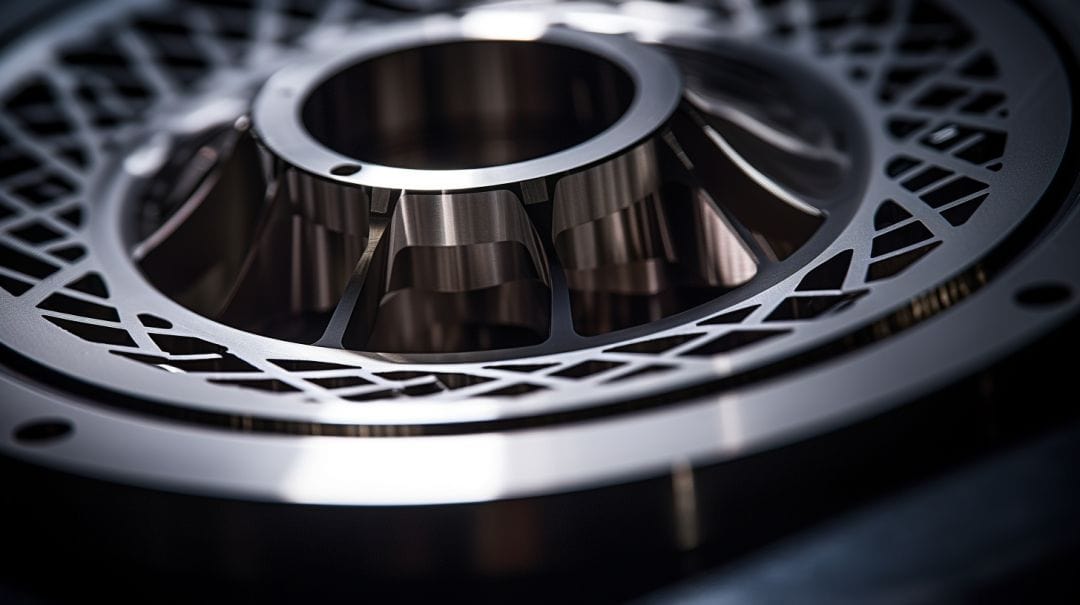
Deep drawing finds its usability in diverse applications across various industries. The aerospace industry extensively uses this technique to produce intricate and high-strength components.
As deep drawn parts exhibit exceptional durability, the automotive industry also favors them for producing a myriad of car parts. Beyond these sectors, medical field adopts the process to create precise surgical tools while electronic companies use it for making robust housings.
Even everyday items such as kitchen sinks owe their formation to this versatile metalworking technique.
Increased Quality
Deep draw stamping promotes top-notch quality for various parts in aerospace components. This process captures intricate details and precise measurements that are essential for accurate performance.
Every stamped component goes through an optical measurement technology to ensure the tightest tolerances, increasing product reliability and enhancing long-term applications. Employing this technique means your aerospace components will fit seamlessly into your assembly with consistent standards.
Low Maintenance Costs
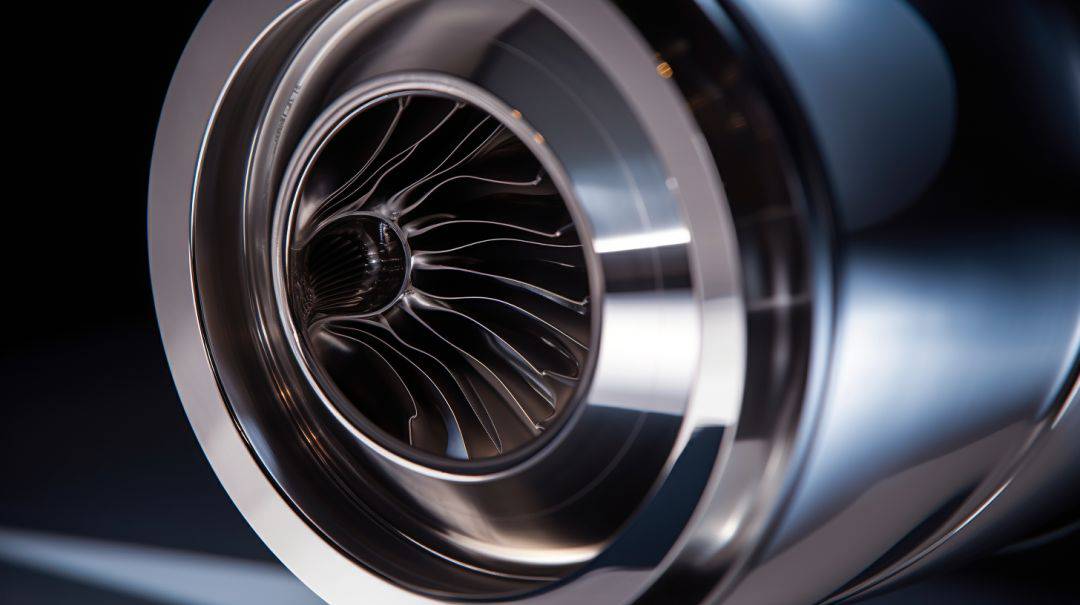
Deep drawn parts promise lower maintenance costs. This stems from the fact that deep-drawn stamping uses a punch and dies to shape the workpiece, fostering sturdier components for aerospace needs.
Durability results in fewer repairs or replacements over time which reduces out-of-pocket expenses for industries.
This cost-efficient process equally implies a reduction of waste materials thanks to precision manufacturing. With exact measurements, metal sheets are shaped with little leftover scrap, making it an optimal choice in terms of both financial and environmental aspects.
Extended Part Life
Deep drawing significantly extends the life of aerospace parts. This process forms the metal rather than cuts it, resulting in parts with fewer weak spots and greater durability. Parts created through deep drawing possess added resilience to stresses like vibration, heat, and pressure often encountered in aerospace applications.
Thus, by effectively resisting wear and tear over time, these pieces serve longer. Being resilient results in reduced replacement costs over the lifespan of an airborne vehicle or system while maintaining operational efficiency at optimal levels.
Environmental Sustainability
Deep drawing plays a crucial role in promoting environmental sustainability. This metal forming process capitalizes on efficient material usage, reducing waste significantly. As industries strive to lower their carbon footprint, the importance of deep drawn stamping becomes evident.
It not only minimizes scrap levels but also significantly reduces energy consumption compared to other manufacturing processes. With its high-volume production capabilities, deep draw metal stamping supports large-scale industrial operations without compromising the existing ecological balance.
Moreover, by opting for recyclable metals, aerospace components brought out through this process contribute further towards a greener industry standard across various sectors including aerospace and automotive among others.
Ease of Use, Repeatable Results, and Improved Productivity
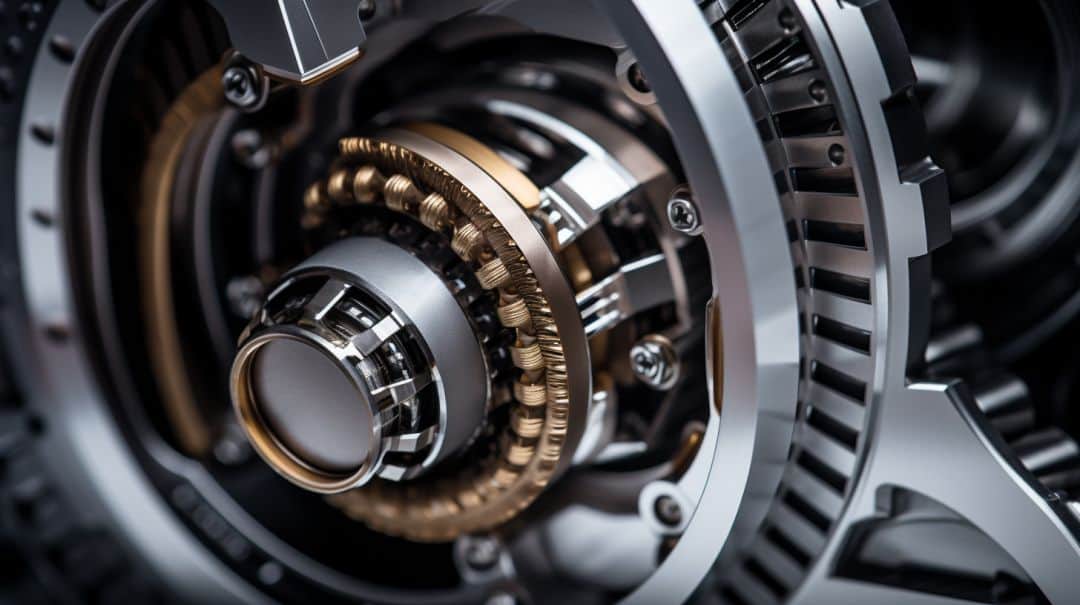
Deep drawn stamping offers notable benefits in ease of use, producing repeatable results, and increasing productivity. This method enables the efficient utilization of materials while minimizing wastage, thus facilitating streamlined manufacturing processes that save both time and manpower.
High-volume production becomes a breeze with deep draw stamping as each cycle quickly produces a new part, maintaining high consistency across batches. The precision achieved during this process further leads to enhanced quality control and reduced rejection rates which directly translates to improved productivity for industries such as aerospace engineering that require accurate components at large scales in fast-paced environments.
High-Quality Parts
Deep drawn parts uphold the highest standard of quality in aerospace manufacturing. Numerous industries benefit from its strength and durability, as they undergo a meticulous process to secure precise measurements and maintain tight tolerances, ensuring an optimal output every time.
An advanced stamping technique creates these exceptional metal components by pulling part of the material into a die, resulting in more robust parts with no seams or joins.
What sets deep draw metal stamping apart is its ability to produce reliable parts that withstand extensive wear and tear. Every component made via this technique promises longevity thanks to the seamless construction which affirms a lesser chance for inherent weaknesses.
As such, value for money is guaranteed because you invest in high-powered products boasting unparalleled resistance against mechanical stress over extended periods.
Process Considerations
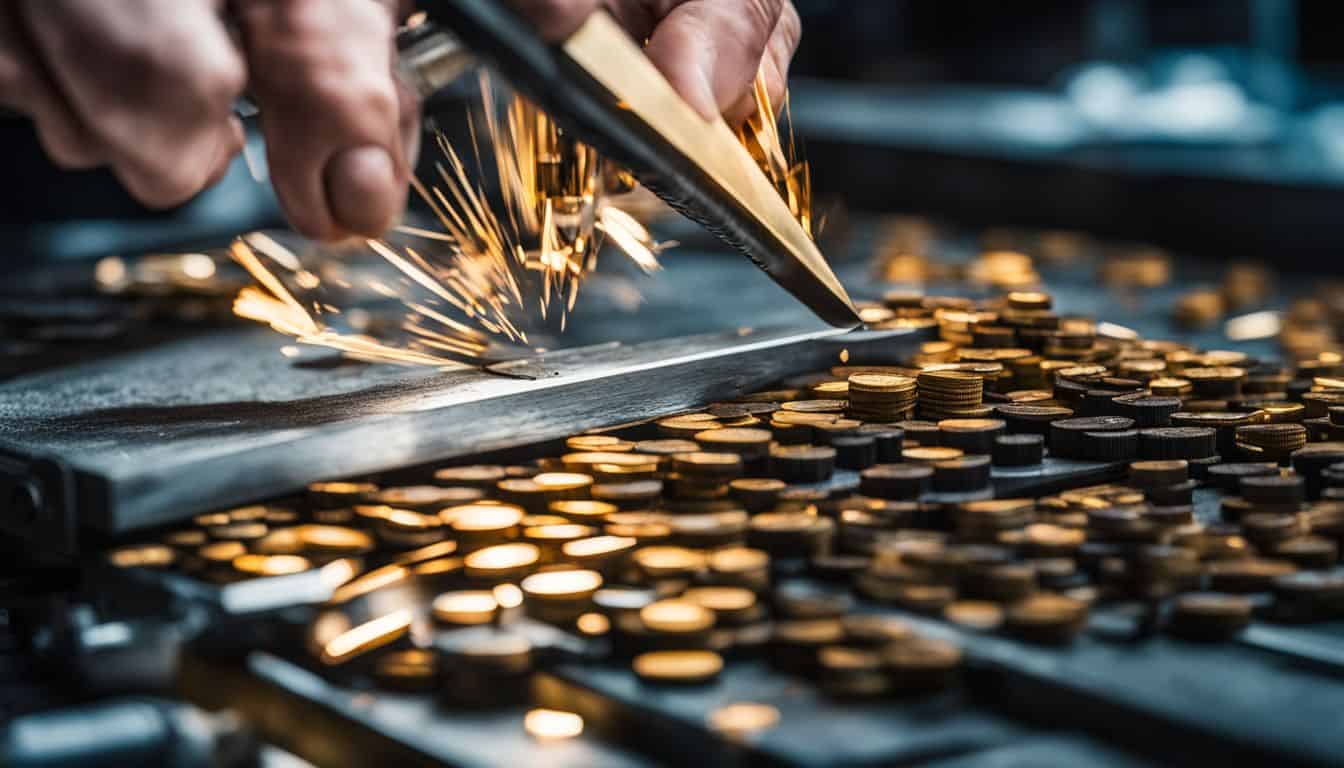
Understanding the key aspects of deep drawing; such as die cavity depth, materials used, and controls on draw speed and depth is crucial for ensuring precision and efficiency. Dive deeper with us into a detailed discussion on each process consideration to enhance your aerospace projects!
Die Cavity Depth
The depth of the die cavity plays a crucial role in the deep drawing process. Its limits help determine how far the punch can go into the sheet metal and shape it accurately to desired specifications.
The cavity must be deeper than the final part so that ample space allows for metal flow without hindrance during deformation. This perfectly aligns with aerospace engineering’s emphasis on preciseness, ensuring consistent quality across high-volume production runs.
Deep drawn stamping thrives on this precision, yielding strong parts with maximized efficiency and minimal wastage. Setting precise depth measures significantly reduces defects in final products while positively impacting cost-effectiveness in long-term applications.
Materials
Steel, aluminum, and copper are among the most commonly used materials in deep drawing. These materials offer excellent malleability and tensile strength, which is essential for the process to be successful.
The properties of these metals also allow manufacturers to create shapes with intricate designs without compromising the structural integrity of the part. High-grade plastics can also undergo this process.
Material selection heavily depends on specific aerospace applications for stress resistance and durability requirements. Easy availability and cost-effectiveness make these materials ideal choices for mass production in the aerospace industry through deep draw stamping.
Die Design
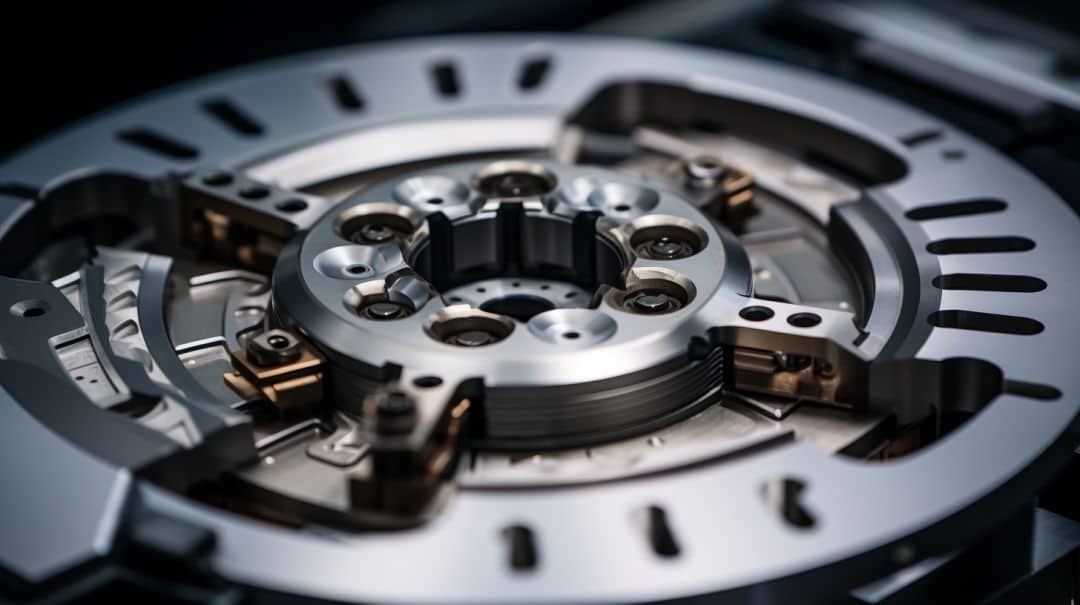
Die design holds significant importance in deep drawing processes. Its proper configuration ensures process effectiveness and high-quality parts production, two aspects essential for the aerospace industry.
A well-designed die precisely forms the metal at its exact locations, limiting defects while enhancing the finished part’s overall quality.
The technique behind die design involves creating a blueprint that calculates precise measurements of the sheet metal to be formed. The shape and size of this design correlate directly with each unique piece required in production.
This suggested process results in a product built to specification every time, boosting efficiency by eliminating extensive revisions or reworking efforts during the manufacturing phase.
Die Lubrication
Proper die lubrication is a key aspect of the deep drawing process that significantly contributes to quality and efficiency. It reduces tool wear and prevents metal from sticking to the dies.
As friction builds up between the die and material, lubricants cool these areas, reducing heat-related damage. Different types of lubricants can be used depending on factors such as material type, speed of operation, temperatures involved in processing, etc. Therefore, careful selection and application of suitable lubricants ensures longer die life and high-quality results with minimal defects in drawn parts.
Die Tempering
Die tempering plays a crucial role in the deep drawing process. It involves heating and cooling the metal dies to enhance their durability. This thermal treatment reduces internal stress in the die materials, increasing resistance to wear and tear, fatigue, and cracking during operations.
Through this method, aerospace engineers can ensure consistent quality in every deep-drawn component produced while prolonging tool lifespan. The punch forces used are smoother because of die tempering – an important factor for ensuring precision deep drawn parts required by various industries such as aerospace manufacturing.
Hold-down Force
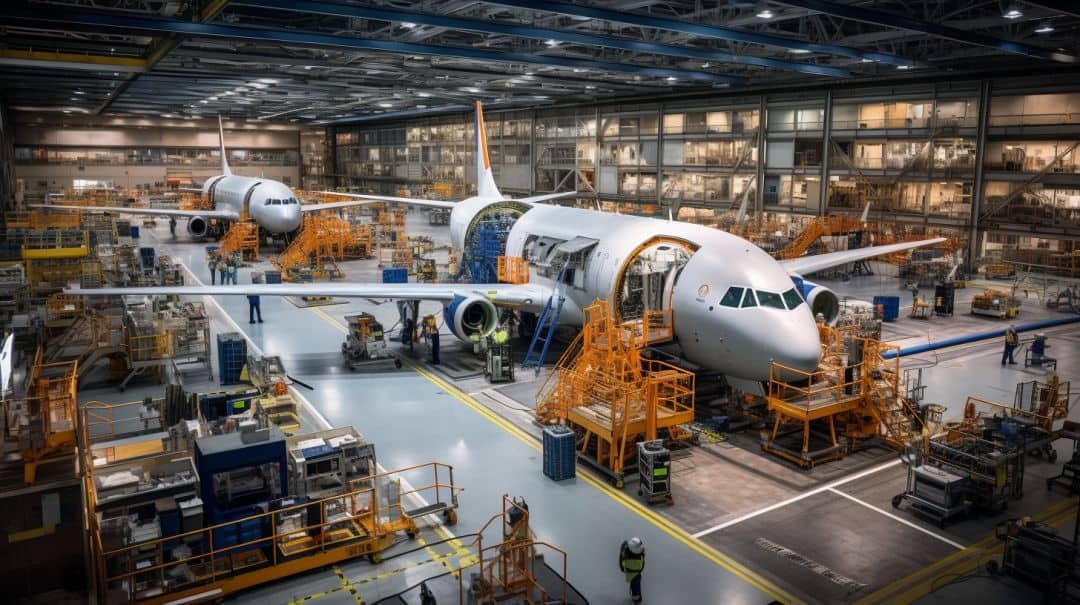
Hold-down force plays a pivotal role in the deep drawing process. It’s the pressure applied to the blank holder to keep it secure, ensuring consistency in production. This force controls metal flow and prevents unnecessary wrinkling during forming.
Engineers adjust this force depending on factors such as material thickness, punch speed, and lubrication conditions to optimize the precision and quality of deep drawn parts. Increased hold-down forces lead to firmer control over material flow but can also risk thinning or tearing of materials.
Thus, establishing a balanced hold-down force is essential for successful high-volume manufacturing in aerospace engineering.
Draw Speed
Understanding draw speed is crucial in deep-drawn stamping, especially within aerospace engineering. The speed at which the punch moves can greatly impact the overall quality of the finished product.
Increasing draw speed results in a smoother surface finish due to less friction between the die and sheet. However, too fast a draw speed can lead to uncontrolled material flow causing wrinkles or tears.
For optimal output, constant monitoring and adjustments are necessary based on the materials used and desired final thicknesses. Since different metals exhibit varied drawing characteristics, engineers must carefully calibrate this parameter for each application.
Precision plays an essential role; even minor miscalculations can result in defective parts that don’t meet industry standards an unacceptable risk in critical industries like aerospace manufacturing.
Ejection Force
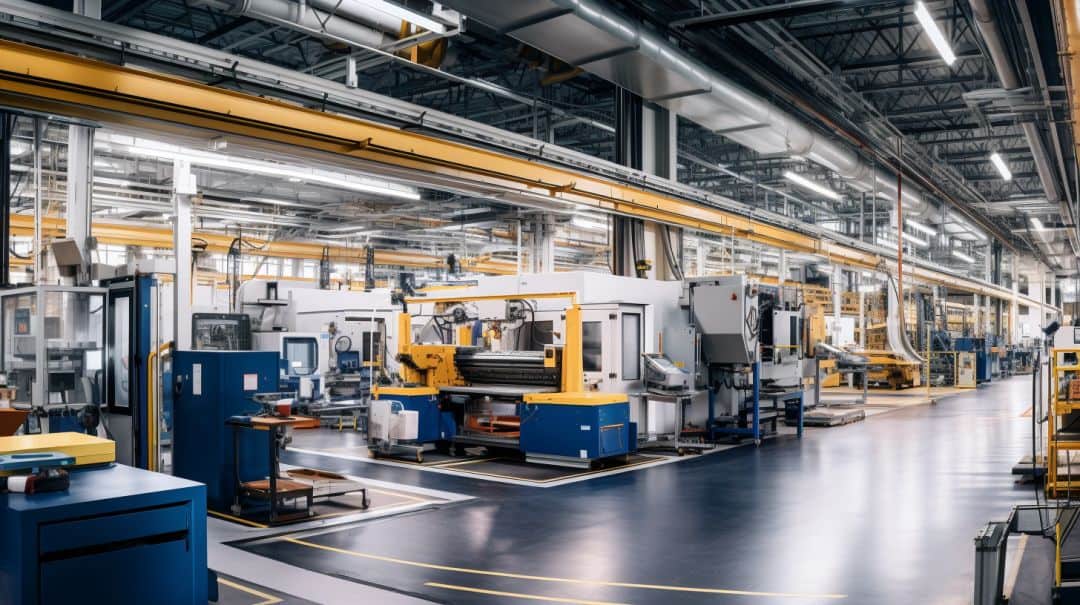
Ejection Force plays a significant role in the deep drawing process. It’s defined as the force required to remove the formed part from a die after pressing is completed. Proper ejection force ensures smooth removal of parts, reducing product damage and increasing efficiency in high-volume productions commonly seen in aerospace engineering applications.
Precisely calculated ejection forces help maintain quality standards while delivering repeatable results, solidifying deep-drawn stamping as a preferred method for creating detailed components for various industries including the aerospace sector.
Strip Thickness
Proper control of strip thickness plays a significant role in deep drawing. It directly contributes to the integrity and structural efficacy of the final product, more so when high precision and reliability are paramount as in aerospace applications.
Changes in strip thickness can lead to variations in tolerances, resulting potentially in tooling malfunctions or production inconsistencies during manufacturing. Precision technology optimizes this process efficiently; therefore constant monitoring is necessary throughout the industry standards maintaining metal’s crystalline structure intact for seamless construction by avoiding unnecessary wastage of material resources.
This attribute ensures a cost-effective process while producing quality deep-drawn parts suitable for critical long-term applications such as those prevalent within the aerospace engineering field.
Blank Profile
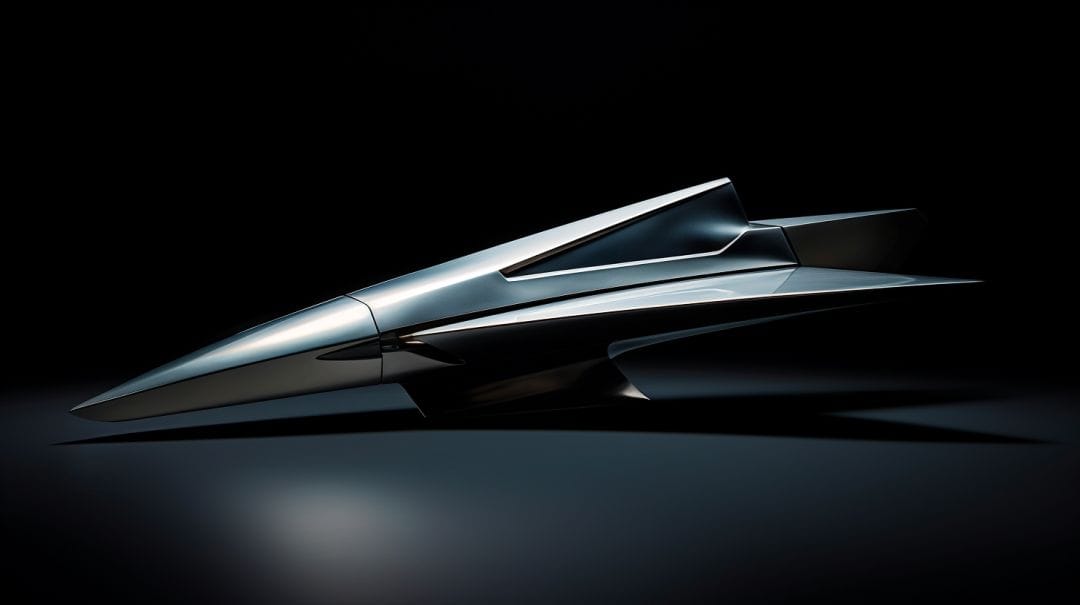
In deep draw stamping, defining a blank profile is vital for the final shape of the part. Typically, a flat, round piece of metal called “blank” is used in this process. The size and shape of the blank directly influence how well it conforms to its die during the deep drawing process.
To create this profile, manufacturers calculate accurate dimensions using factors like material thickness and die cavity depth. They aim to minimize waste while ensuring precision during stamping.
Having an accurately measured and cut blank results in fewer defects during manufacturing procedures which subsequently increases efficiency in production processes, especially within high-volume industries such as aerospace engineering.
Causes and Prevention of Common Defects
In deep drawing, potential defects like earing and wrinkling may occur, however, using tools like draw beads and implementing proper lubrication strategies can avoid these issues. Thinning and tearing can negatively impact the overall part quality; to prevent them, it’s vital to manage friction effectively through suitable surface finish techniques.
Ensuring precise measurement in strip thickness helps maintain the integrity of drawn parts by preventing deformation or failure during the process.
Earing
Earing refers to a common defect that occurs during deep drawing. It presents as irregularities formed at the upper edge of drawn cup-like parts and is caused by anisotropy in sheet metal, a condition where material properties like strength and elasticity are directionally dependent.
In precision-oriented fields such as aerospace engineering, earing not only compromises functionality but also hampers quality control processes. Thankfully, this problem can be tackled proactively with advanced technology like optical measurement for real-time detection and correction.
Earing control is essential to eliminate waste during high-volume production runs and achieve seamless construction in final products, contributing significantly towards cost-effectiveness associated with deep drawing.
Wrinkling

Wrinkling is a common defect in deep drawn components that aerospace engineers must manage closely. It occurs when excessive material pulls into the die causing distortions in metal parts.
This phenomenon often happens as a result of insufficient blank holding force or improper lubrication during the stamping process. To prevent this, reducing the surface traction between metal and tool can help maintain smooth, wrinkle-free external walls in large production runs.
Attention to draw speed also plays an important role because slow speeds increase friction leading to more fold formation on edges. Therefore, effective prevention strategies include managing correct punch velocity while ensuring optimal lubrication and appropriate hold-down forces for each unique metal used in stamping services.
Using Draw Beads
In deep drawing operations, draw beads play a critical role. Their purpose is to control the metal flow and prevent undesired wrinkling or tearing of the sheet metal during stamping processes.
They act as speed bumps that stretch and compress the material before it flows into the die cavity, thus managing its direction and rate of movement effectively. Draw beads can be adjusted in size and placement depending on the desired level of restrictiveness.
This technique enhances both product precision and manufacturing consistency in aerospace engineering firms immensely benefitting from high-quality components produced with minimal defects due to improved handling of materials within each unit’s construction phase through deep draw stamping.
Thinning and Tearing
Thinning and tearing occur when metal reduces its thickness in certain areas during the deep drawing process. It’s a common issue often seen on corners or edges of the workpiece where material stretch is extreme.
This spot-thinning not only diminishes product quality but could also lead to tears, causing usable parts to be discarded.
Various strategies prevent thinning and tearing in deep drawn parts. Stress redistribution through double action draws or using larger blank holders helps control metal flow and reduce strain exerted onto these sensitive sections.
Adopting correct die designs with softer geometries can keep materials flowing evenly, avoiding excessive stretching. Lastly, optimizing lubrication conditions ensures manageable coefficients of friction throughout the operation an effective means of preventing undue wear and potential tearing of your sheet metals.
Managing Friction: Lubrication and Surface Finish
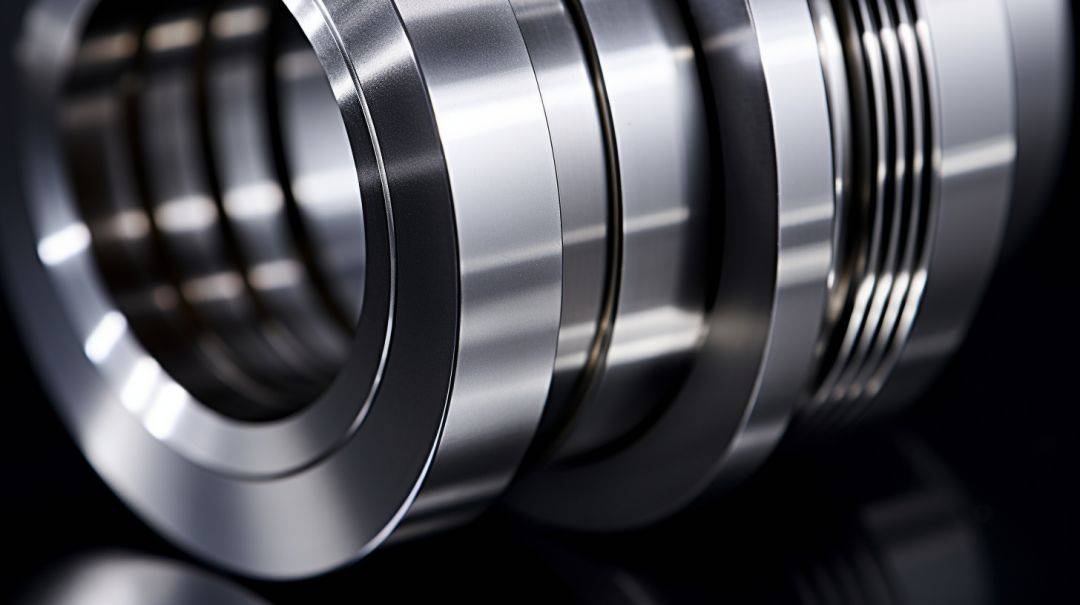
Applying adequate lubrication directly impacts the efficiency of the deep drawing process in reducing friction. Different types of lubricants serve unique purposes: some facilitate smooth, continual movement during high-volume production, while others maintain part consistency and quality.
Optimal surface finish also plays a critical role besides lubrication in effectively managing friction. An overly rough or excessively smooth surface can accelerate wear and tear on both parts and tools, while an optimal finished surface provides just enough ‘grip’ to promote controlled movements along with reduced friction.
The science-based selection of suitable lubricants and thoughtful application of desired finishes significantly enhance durability and performance in aerospace components production processes.
Deep Drawing Parameters
Understanding deep drawing parameters is crucial for aerospace engineers. Bed size plays a big part in the process, accommodating large drawn parts. Tonnages and speeds determine the overall efficiency of the operation.
The stroke and daylight of the machine impact how far it can draw material into complex forms. These key features enable precision during production and ensure high-quality outcomes for aerospace components.
Bed Size
Bed size is a critical parameter in the deep drawing process. It influences the types of parts you can form, affecting overall production efficiency. Large beds allow for larger or multiple parts to be stamped simultaneously, increasing throughput and reducing manufacturing costs.
However, having a bed that’s too large for your specific needs might result in unnecessary expenses and wasted space within your facility. Balancing both factors promotes optimal productivity in aerospace engineering tasks where high-volume production is essential.
Tonnages and Speeds
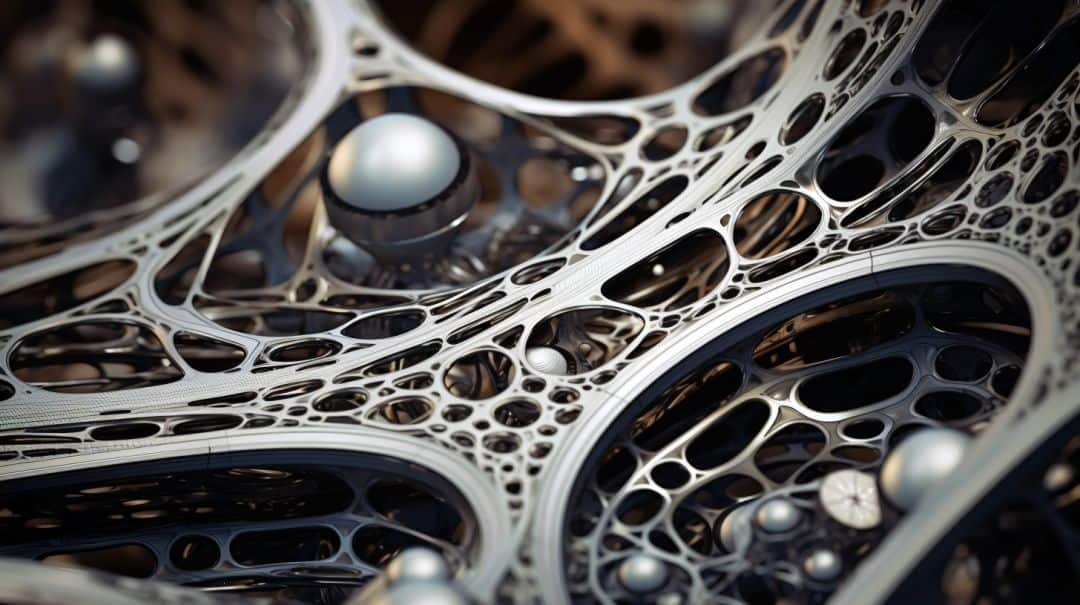
High tonnage is a crucial aspect of deep drawing, enabling the reshaping of robust metals into precise forms needed in the aerospace industry. It involves applying significant force to reshape sheet metal materials without breaking or tearing them.
High-tonnage stamping presses provide an optimal solution for forming deep drawn parts, often handling as high as 1000 tons depending on the material and shape complexity.
Speed also plays a pivotal role in deep drawing processes used by aerospace engineers. Rapid production speed makes it possible to achieve high-volume targets while maintaining quality standards.
Enhanced technology allows today’s machinery to work at an accelerated pace, increasing productivity while ensuring tight tolerances are a key factor in delivering reliable components for demanding applications like aerospace engineering.
Stroke and Daylight
In deep drawing, stroke and daylight are decisive parameters that directly influence the quality of the final product. The ‘stroke’ refers to the linear movement or displacement of the punch from its highest position to its lowest, during which it shapes or forms metal parts.
Having adjustable strokes in a press allows for increased flexibility in creating numerous designs with different depths and diameters. On the other hand, ‘daylight’, often stated as ‘open height’, is the maximum distance between die and ram when both are fully apart.
It impacts how large a sheet can be processed at once without causing interference with press operation. Both these factors play pivotal roles in ensuring accuracy, precision, and efficiency within aerospace-related stamping processes while minimizing potential defects.
Advanced Capabilities
As the deep drawing process evolves, it is now capable of more complex methods such as the use of multi-point blank holders and cushions, offering better control over material flow.
Deep drawing also incorporates various cushioning options along with innovative techniques like blanking and piercing, hugely augmenting its functionality. To explore more about these advanced capabilities in detail that can make aerospace engineering significantly efficient, delve into our upcoming sections.
Multi-Point Blank Holders and Cushions
Multi-point blank holders and cushions bring greater precision to deep draw stamping. They secure metal blanks evenly, reducing the risk of wrinkles or other defects during the pressing process.
Cushions ignite pressure from below, aiding in the smooth ejection of the completed part. Their utilization is a pivotal step within aerospace engineering, ensuring parts are consistently high quality and defect-free.
Cushioning Options
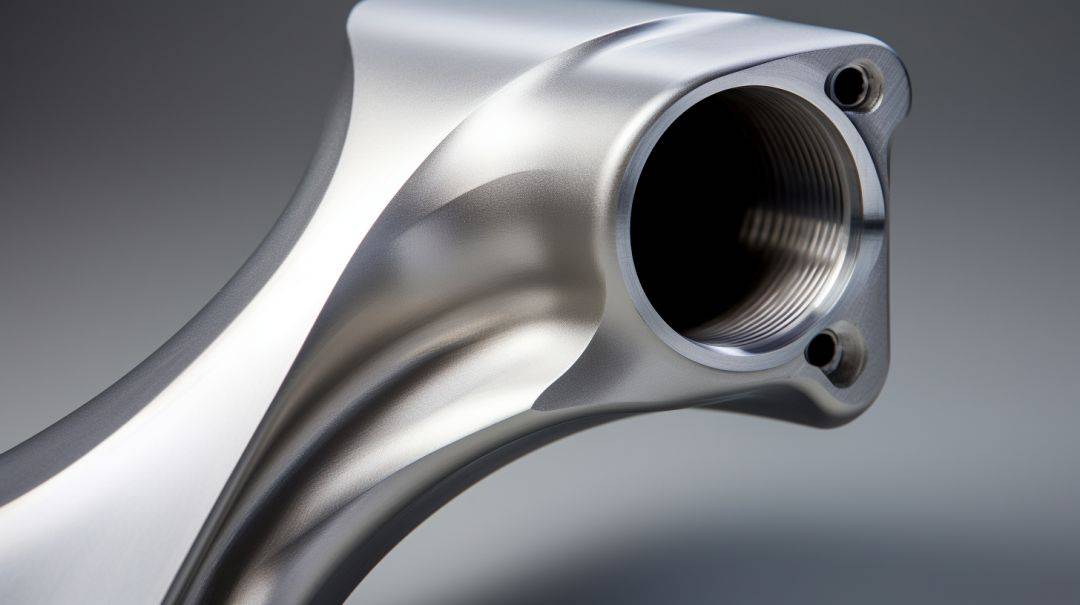
Cushioning options play a crucial role in the deep drawing process, contributing significantly to the efficiency and quality of stamped parts. By evenly distributing force during stamping actions, they prevent irregularities and deformations from compromising your results.
Moreover, cushioning systems aid in controlling material flow throughout the course of forming operations.
In aerospace manufacturing projects involving complex or intricate shapes, customized cushioning can optimize tool performance while maximizing part uniformity. You can choose appropriate pressure settings that maintain precise control over metal shaping processes.
From managing wrinkling issues to trimming operations, these options encompass various possibilities tailored to project-specific needs. With effective adjustment parameters for their actuation level and force distribution characteristics, cushion settings offer enhanced flexibility beneficial for diverse applications across aerospace engineering requirements.
Blanking and Piercing
Blanking and piercing are advanced capabilities in the deep drawing process. Blanking refers to removing or cutting materials from a metal workpiece. It’s an integral step in shaping precise measurements necessary for aerospace components, while also reducing waste.
Piercing, on the other hand, is all about creating holes or openings within finished drawn parts using a specialized punch tool. In essence, combining these procedures with deep drawing ensures high-quality stampings for aerospace requirements without sacrificing the efficiency and accuracy of the final product.
Significantly improving production volumes ultimately delivers cost-effective solutions for larger production runs in this industry.
Alternative Processes to Deep Drawing
While deep drawing is highly advantageous, it’s important to note alternative metal-forming processes offer distinct benefits too. Roll forming brings efficiency for long or coiled sheet metals.
Stretch forming allows more design flexibility and superior surface quality. Hydroforming gives complexities unattainable with traditional pressing methods. Lastly, stamping shines in the high-volume production of simple parts efficiently.
These alternatives provide varied solutions tailored quantitatively to specific aerospace engineering needs ensuring optimal output outcomes.
Roll Forming
Roll forming is an efficient alternative process to deep drawing, typically utilized for producing long, linear-shaped parts. The sheet metal passes through a series of roller dies that progressively shape the metal into the desired profile or cross-section.
This process excels in high-volume production runs and offers notable benefits such as low tooling costs and excellent surface finishes for the end product. It also accommodates a broad range of metals, adding to its versatility.
Like deep drawing, roll forming bears immense potential for saving time and money in aerospace engineering without compromising on part precision and quality.
Stretch Forming

Stretch forming provides an effective alternative to deep drawing. In this process, a metal sheet or part is clamped at its edges and then stretched over a die or form block, utilizing the tensile strength of the material.
This stretching action results in precise forms that maintain their shape even after removal from the mold.
Acclaimed for its versatility, stretch forming serves as one of the go-to techniques for creating curved components with high dimensional accuracy. This makes it particularly valuable within aerospace engineering where precision is critical.
Noteworthy too is how stretch forming sustains minimal thinning during shaping, thus ensuring higher structural integrity of parts produced compared to other methods.
Hydroforming
Hydroforming revolutionizes the manufacturing process by molding ductile metals such as aluminum or stainless steel into desired shapes using a high-pressure fluid. This innovative technique proves essential in crafting complex shapes with smooth finishes, making it an impeccable choice for aerospace engineering.
Unlike other methods, Hydroforming eliminates the need for welds and joints, enhancing part strength and integrity. Soaring above traditional techniques in terms of efficiency and cost-effectiveness, hydroforming remains a remarkable alternative to deep drawing processes.
Stamping

Stamping offers a reliable alternative to deep drawing, particularly suitable for high-volume production. This method uses die and punch to create workpieces from sheet metal blanks.
Stamping excels in producing detailed components with accurate inside measurements and precise tolerances, matching the stringent industry standards of aerospace engineering. Notably, stamping can produce complex shapes in one go without compromising the material’s strength or thickness – an essential feature in aerospace applications.
With this process, engineers achieve high-quality parts whilst efficiently managing the time and costs associated with manufacturing processes. Because of its versatility and precision, industries beyond aerospace have recognized stamping as an effective solution for their fabrication needs.
Design Tips for Aerospace Engineers
Delve into the intricacies of aviation design utilizing lightweight metals, avoiding sharp edges for enhanced aerodynamics, incorporating uniform wall thickness for optimal strength-to-weight ratios, and considering airtight features crucial in aerospace applications.
Tune in on how these indispensable tips can revolutionize your aerospace engineering projects. Read more to discover the future layers of efficient deep draw parts implementation in this dynamic industry!
Utilize lightweight metals
Aluminum, titanium, and other lightweight metals play a pivotal role in deep drawing for aerospace engineering. These metals increase the efficiency of airplanes due to their low density and high strength characteristics.
Lightweight metals also maintain excellent resistance against corrosion and deterioration over time which ensures long-lasting durability of aerospace components.
The attraction to lightweight metals isn’t just about their physical properties but they are highly effective in energy conservation as well. For instance, lighter aircraft consume less fuel resulting in lower emissions which contribute positively towards environmental sustainability goals across the globe.
Engineers find these resourceful materials indispensable when crafting parts for efficient aviation design using deep draw stamping methods.
Avoid sharp edges

Sharp edges pose a threat to the structural integrity of deep-drawn parts in aerospace applications. During the stamping process, these problematic areas can cause tears and cracks, leading to part failure.
To avoid such problems, engineers should design parts with smooth transitions and curved features instead of sharp angles. This approach enhances the strength and longevity of components.
Impeccably designed parts without sharp edges also contribute toward ensuring safety standards in various high-volume production industries like aerospace engineering where precision crucially matters! Investing time in thoughtful design will ultimately save resources during manufacturing and extend the life span of each produced component.
Implement uniform wall thickness
Uniform wall thickness is crucial in deep draw stamping. A consistent thickness ensures the strength and durability of the final product, enhancing its performance under pressure. Having a universal size prevents deformations like wrinkling or tearing during the production process.
It also allows for easier quality control since rejects due to material variability are greatly reduced.
By implementing even wall thickness, engineers can drastically decrease waste from defective parts as well as limit equipment stress and tool wear during the fabrication stage without compromising on the part’s integrity and resilience, both of which are vital in aerospace applications.
This leads to higher productivity rates and cost efficiency at high volumes, making uniform thickness one facet that should not be overlooked by designers creating new components using deep-drawn methods in aerospace engineering.
Consider airtight features
Airtight features hold great value in the field of aerospace engineering, playing a vital role in equipment’s functionality and safety. Deep draw stamping proves efficient for creating such essential, sealed units.
The process yields components with seamless construction and precise measurements, making them inherently resistant to leaks, ensuring that they are airtight even under extreme pressure changes or harsh environmental conditions prevalent in aviation scenarios.
With the use of appropriate alloys during the deep drawing process, manufacturers achieve high-quality parts capable of sustaining intense operations without compromising on their hermetic capability.
The incorporation of these impermeable traits not only accelerates product longevity but also boosts performance reliability within the aerospace system architecture. Aerate constructions created by this method build sturdier seals than fabricated or welded counterparts since cracks formed via welding can lead to leakages over time an aspect essentially unheard of in deep drawn stamped items due to their solid structure formulated from a singular metal sheet dolled into desired shapes through successive punch die matrices manipulation.
Therefore, considering airtight elements while developing designs proves critical for producing effective aerospace components.
Conclusion
Deep drawn parts present groundbreaking opportunities for efficient aerospace engineering. Embracing this technology provides high-volume, cost-effective production while maintaining top-tier quality and precision.
Deep draw stamping companies continue to innovate, solidifying deep drawing as a pivotal process in shaping the future of aerospace industry. The era of advanced metal forming has arrived; it’s solution-focused with its eyes set on the stars!
FAQs
What are deep drawn parts?
Deep drawn parts refer to the products made from a metal stamping process called deep draw stampings, which can be used in a variety of industries including aerospace engineering.
How does the deep draw process work?
In the deep draw process, the metal’s shape is altered through cold forming without heat treating it first. This produces various stamped components with different wall thicknesses according to need.
What types of metals can be used in this process?
A variety of metals like stainless steel, copper and aluminum among others might undergo this treatment at Hudson Technologies or Manor Tool that offer professional deep drawn stamping services.
Does the company also make other varieties of stamped items?
Yes! Besides creating diverse deep-drawn metal stampings down to 0.01 inches; they additionally make specialties such as short-run coin enclosures and even eyelet ferrules within plus or minus tolerances.
What sort industries typically use these pieces?
Deep drawn components find usage across many industries thanks to their ability for efficient production representation – from automotive sectors right up till healthcare provision including treatment devices support!
Where do I get more information or request a quote?
Easy! Just email your request to websales@natlmfg.com or give us a call at 973.635.8846. All additional queries related and not limited could possibly be addressed either by visiting featured resources sections via respective websites directly contacting service providers customer care for an instant quote response accordingly.


